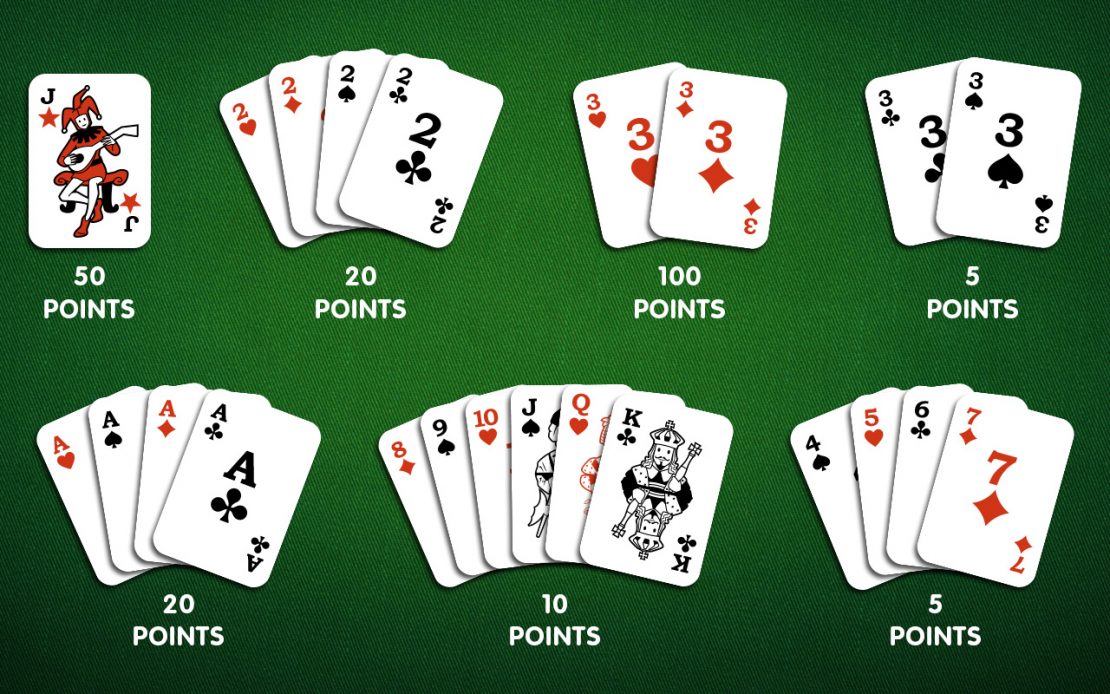Two players compete in a variation of Classic Canasta with 15 cards per person instead of 11. To win, each team must reach two canastas first.
To count as a positive score, a player must lay down a meld during their turn at the table. Any remaining cards in their hand after play is complete count against their score.
Rules
Canasta’s primary objective is to score points by creating melds (combinations of three or more cards of equal rank) using either wild cards or regular decks of cards, often called standard decks of cards. Originating in Latin America and becoming popular in the U.S. since 1950s, four players in two partnerships play this card game with standard decks; after shuffling, each is given 11 cards from which some may be placed into a discard pile for later playback.
Each turn, players may opt to select the top card from the discard pile and take it. Doing this may give them extra cards they can use in their melds; if their meld contains either black or red threes they may even score an extra 100 points for going out!
Variations
Some variations of Canasta allow teams to create an initial meld of wild cards containing seven twos and jokers in any combination, scoring up to 2,000 bonus points when completed before play ends; if not completed within this time limit a penalty applies; discard piles may not be taken if one contains seven on top.
Canasta is played using two standard 52-card decks plus four jokers (108 cards in total). Players are divided into two partnerships that compete against each other to score hands when one player “goes out”, meaning he no longer holds any cards left in his hand and immediately scores them all back to their team.
Scoring
Canasta’s basic rules remain constant; however, variations to the game allow for different scoring systems and winning chances. Usually the first partnership to reach a score of 5,000 in any hand wins; if both partnerships reach this threshold at once then the side with higher score will be declared the victor.
Canasta is the game’s namesake: seven cards of identical rank melded together into one set. A Canasta may contain up to three jokers but cannot contain other wild cards.
Going Out occurs when one side melds two or more Canastas and receives bonus points for Red Threes as well as unusable cards they still possess in hand.
Materials
This timeless card game of melding and taking turns is beloved among both novice and seasoned players alike. Originating in Latin America, rummy eventually gained popularity throughout North America during the 1950s era and many variations exist today.
Canasta uses two standard 52-card packs with four Jokers each to total 108 cards for play, played either in partnerships of four players or two pairs. Canasta was first created by Segundo Santos and Alberto Serrato who wanted a faster form of bridge.
Canasta League of America has established the rules, available to purchase here, as well as various helpful resources such as Pagat and Gathertogether Game; spades are considered higher in rank than diamonds, hearts or clubs.
Origins
Canasta first made its debut in Montevideo, Uruguay and soon gained worldwide acclaim. From there it spread throughout Argentina, the USA, and many other regions around the globe to become one of the most beloved card games during the 1950s – even challenging Contract Bridge for supremacy as an arena card game!
Segundo Santos and Alberto Serrato created Canasta as an alternative to the time-consuming game of bridge. Without regard for copyright issues, their primary concern was creating a fun yet challenging card game.
Canasta, from Spanish meaning basket, was given its name because its creators played it at a cafe using a canastillo as their card holder – hence why the term has persisted since.




